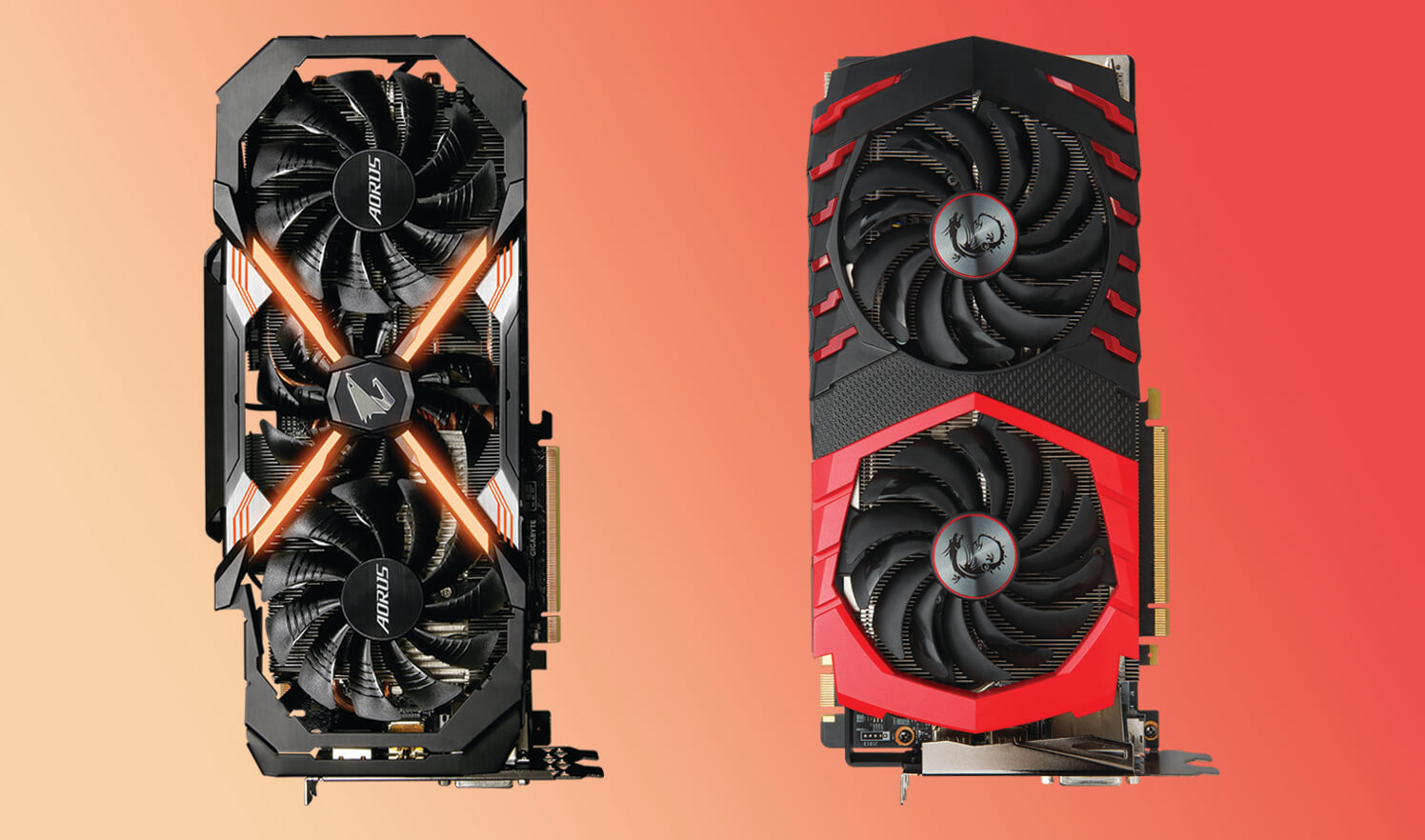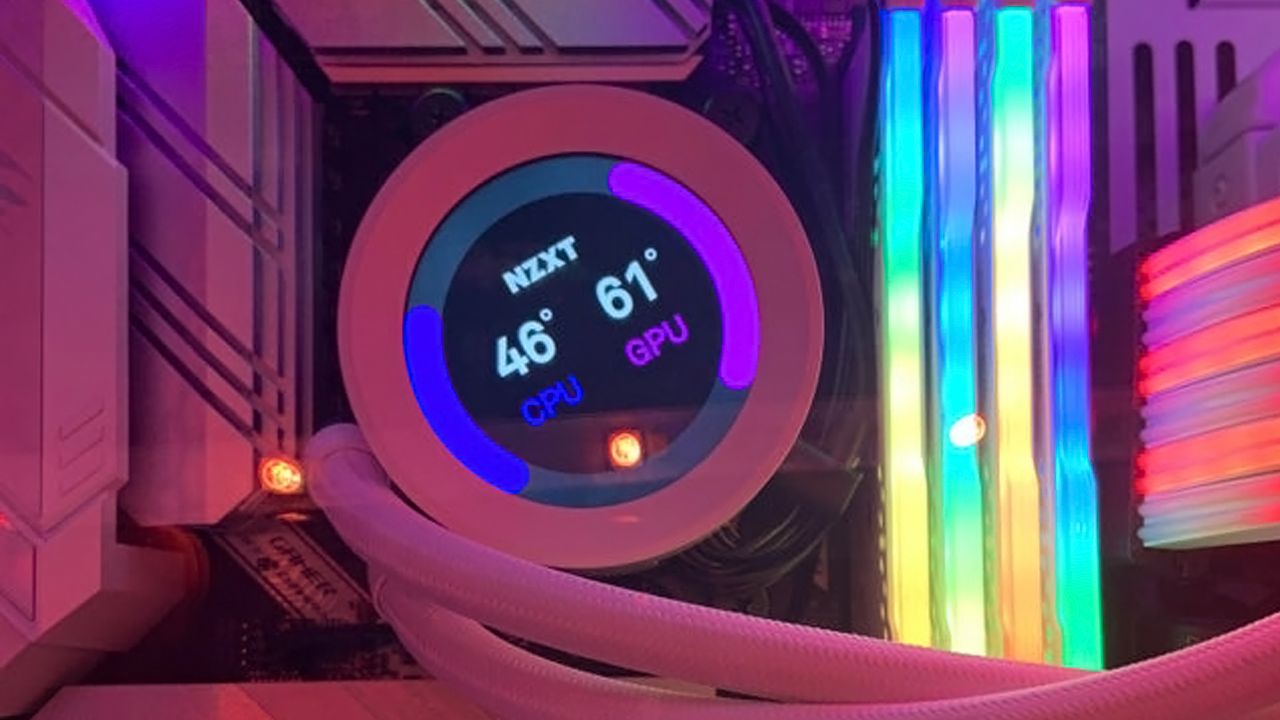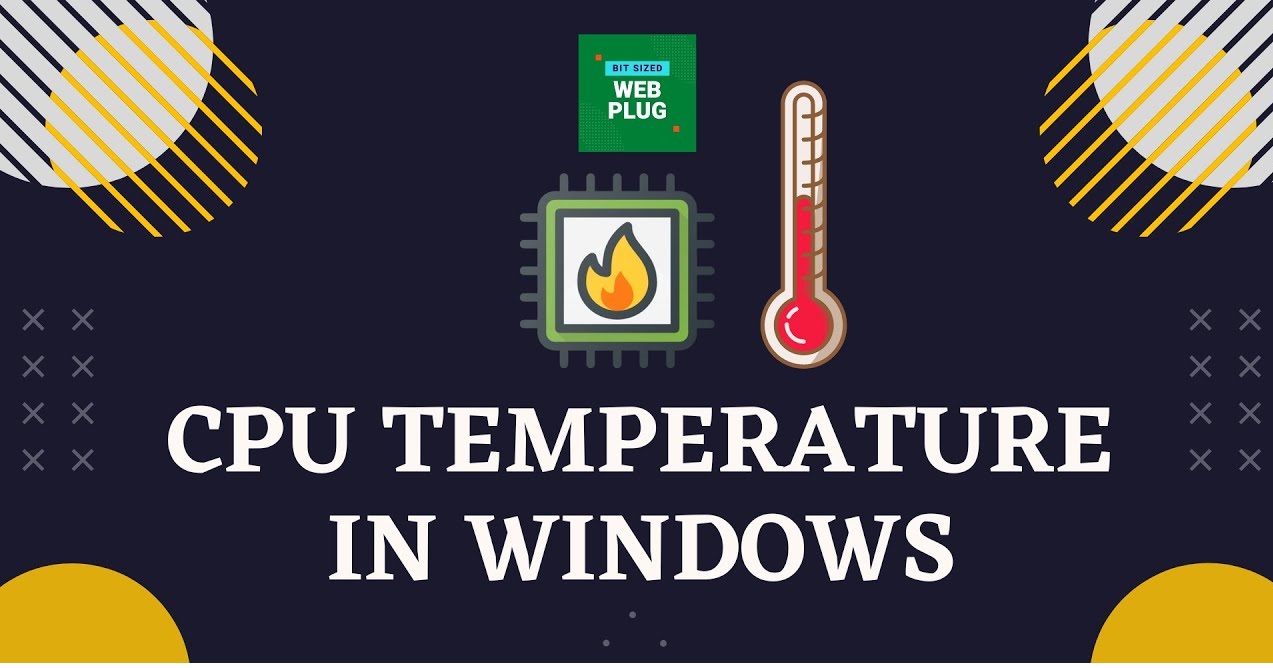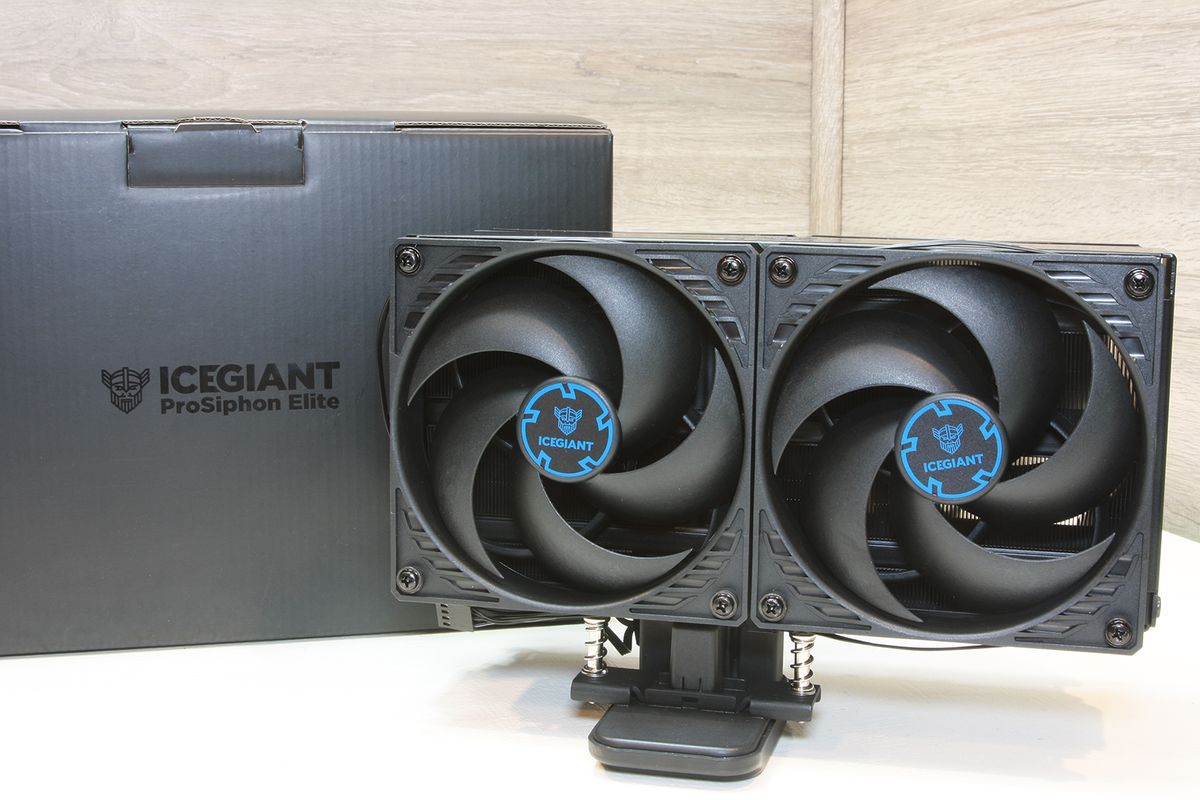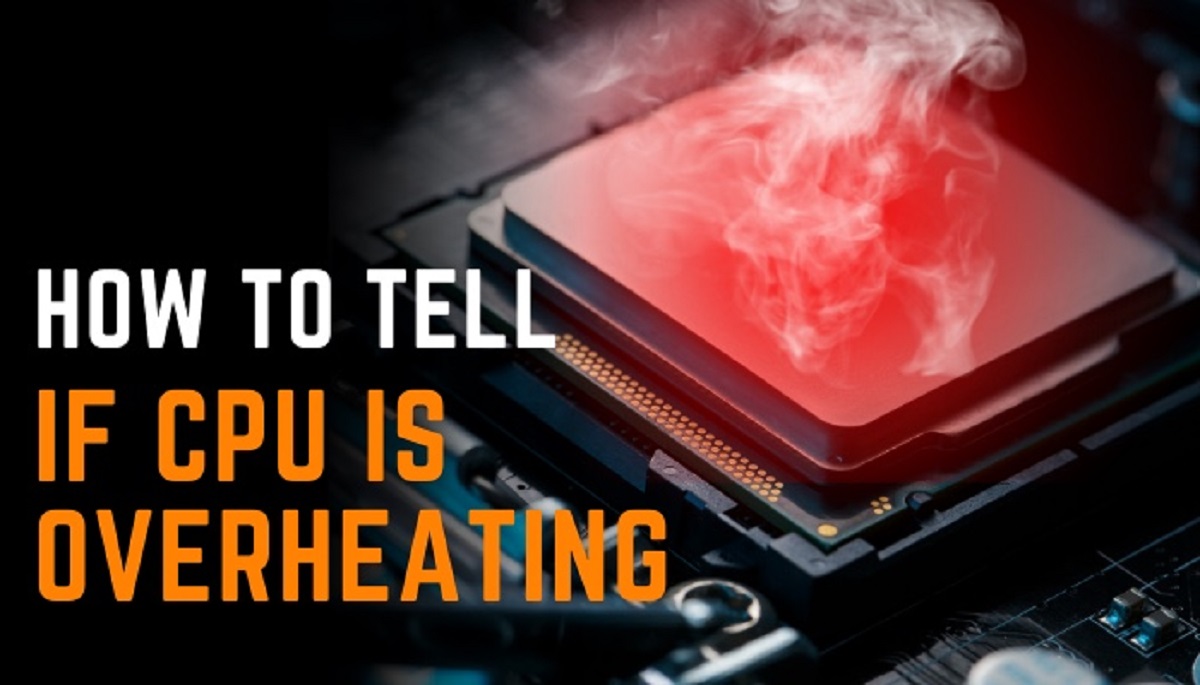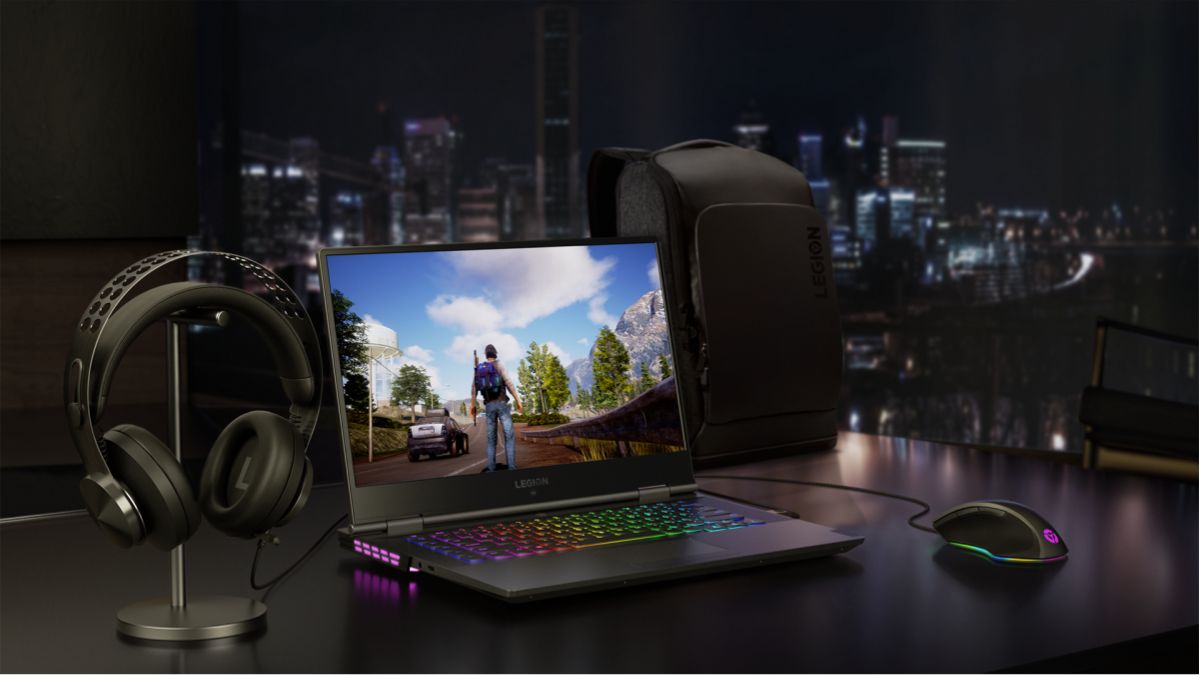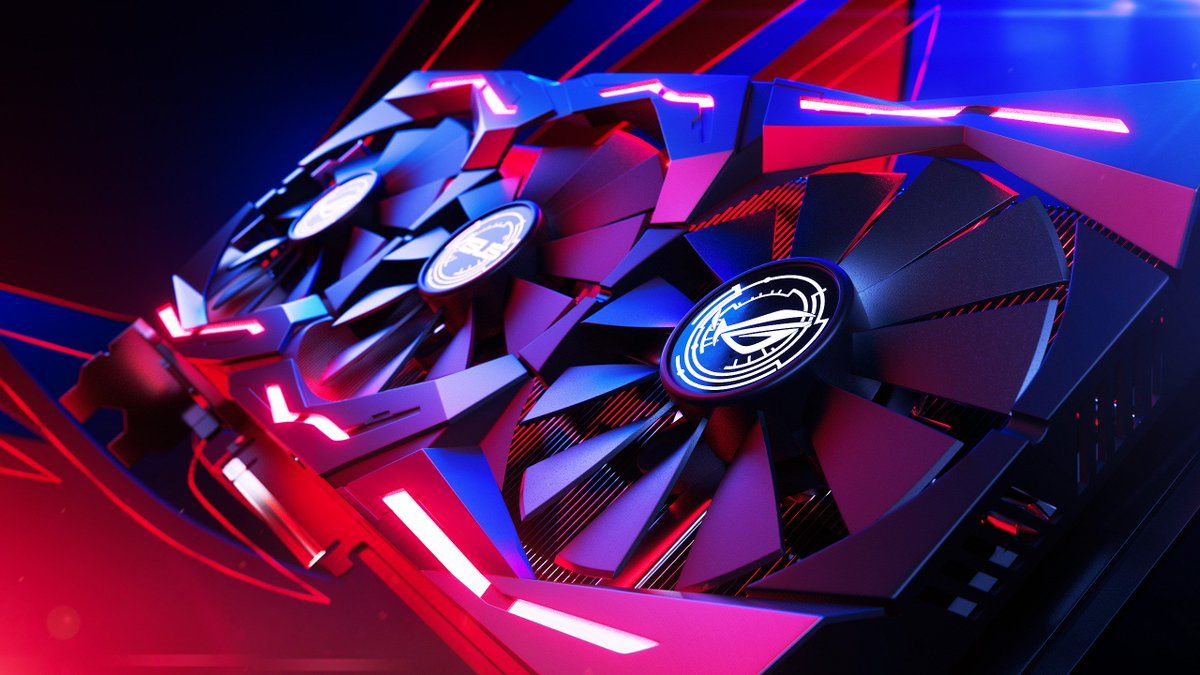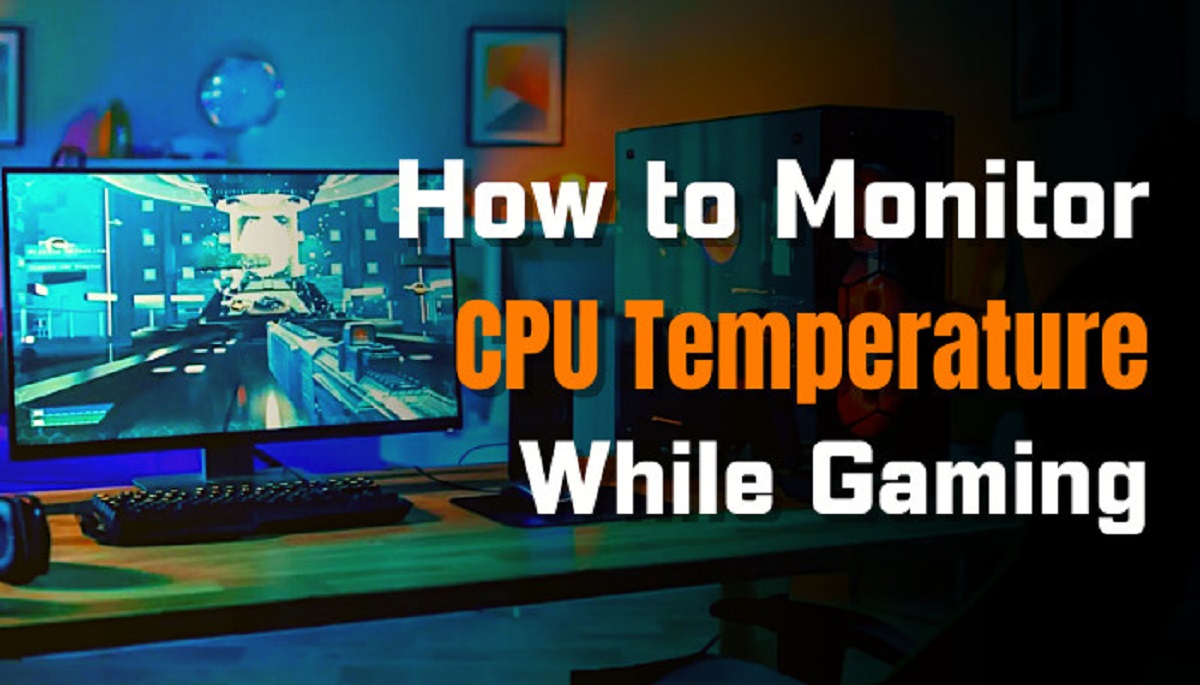Introduction
Checking the temperature of your GPU (Graphics Processing Unit) is crucial for maintaining optimal performance and preventing potential hardware issues. The GPU is a critical component of your computer that handles complex graphics and calculations, particularly in gaming and video editing applications.
As the GPU performs these demanding tasks, it generates heat. If the temperature exceeds safe limits, it can lead to performance degradation, system instability, or even permanent damage to the GPU. Therefore, regularly monitoring your GPU temperature is essential to ensure smooth and efficient operation of your computer.
There are several methods available to check the GPU temperature on different operating systems. Whether you’re using Windows, Mac, or Linux, you can easily keep an eye on your GPU’s temperature and take appropriate measures to maintain it within the recommended range.
This article will provide you with step-by-step guides on how to check the GPU temperature on various operating systems. We’ll cover both the built-in methods and third-party software options, allowing you to choose the most convenient approach based on your preferences and needs. Additionally, we’ll share some useful tips to help you monitor and maintain optimal GPU temperature for long-term performance and longevity.
So, whether you’re an avid gamer, a graphic designer, or simply a computer enthusiast, understanding how to check and manage your GPU temperature is vital for maximizing your system’s capabilities and safeguarding your hardware investment. Let’s dive into the different methods of checking GPU temperature on various operating systems!
Why is it important to check GPU temperature?
Monitoring the temperature of your GPU is crucial for several reasons. Here are the key reasons why checking GPU temperature is important:
- Preventing Overheating: Unlike other computer components, GPUs tend to generate a substantial amount of heat. Overheating can cause performance issues, system crashes, or even permanent hardware damage. By regularly checking your GPU temperature, you can identify potential overheating problems and take immediate action to prevent any adverse effects.
- Optimizing Performance: High GPU temperatures can lead to throttling, which is a process where the GPU reduces its speed to dissipate heat. This can result in lower performance and reduced frame rates, affecting your overall gaming or video editing experience. By monitoring and maintaining optimal GPU temperatures, you can ensure your GPU operates at its full potential, delivering smooth and consistent performance.
- Prolonging GPU Lifespan: Just like any other electronic device, excessive heat is detrimental to the longevity of your GPU. Continuous exposure to high temperatures can cause the GPU’s components to degrade over time, shortening its lifespan. By keeping a close eye on GPU temperature and keeping it within recommended limits, you can extend the lifespan of your GPU and maximize your investment.
- Identifying Cooling Issues: Through temperature monitoring, you can identify potential cooling system problems in your computer. These issues may include malfunctioning fans, blocked air vents, or improper heat dissipation. By identifying and addressing these cooling issues, you can ensure efficient cooling and prevent any long-term damage to your GPU.
- Overclocking and Tweaking: Many enthusiasts and gamers like to overclock their GPUs to squeeze out extra performance. However, overclocking increases power consumption and generates more heat. Monitoring GPU temperature is crucial during overclocking to ensure that the temperature remains within safe limits and prevent any damage to the GPU.
By understanding and regularly checking your GPU temperature, you can protect your hardware, optimize performance, and maximize the lifespan of your computer. Let’s now explore the different methods to check GPU temperature on Windows, Mac, and Linux systems.
How does high GPU temperature affect performance?
High GPU temperatures can have a significant impact on the performance of your computer, especially when it comes to graphics-intensive tasks such as gaming and video editing. Here are some ways in which high GPU temperature can affect performance:
- Thermal Throttling: When a GPU reaches high temperatures, it often activates thermal throttling as a protective measure. Thermal throttling reduces the GPU’s clock speed and voltage to lower the temperature and prevent overheating. This decrease in clock speed can result in reduced performance and lower frame rates, leading to a less smooth and responsive gaming experience or slower rendering times in video editing applications.
- System Instability: High GPU temperatures can cause system instability, resulting in crashes, freezes, or sudden shutdowns. When the GPU gets too hot, it can lead to errors in processing graphics data or malfunctioning of the GPU’s memory. This can disrupt the smooth operation of applications and potentially lead to data loss or system damage if not addressed.
- Graphic Artifacts: Excessive heat can cause graphic artifacts to appear on your screen during gameplay or while performing graphics-intensive tasks. These artifacts can include flickering pixels, screen tearing, or distorted textures. These visual anomalies not only hinder the overall visual experience but also indicate potential hardware issues caused by high GPU temperatures.
- Decreased Lifespan of the GPU: Continuous exposure to high temperatures can significantly shorten the lifespan of your GPU. The excessive heat can cause the GPU’s components to degrade more quickly over time, leading to a higher risk of hardware failure. By maintaining optimal GPU temperatures, you can help prolong your GPU’s lifespan and avoid the need for an expensive replacement or repair.
- Increased Power Consumption: High GPU temperatures often result in increased power consumption as the GPU requires more energy to cool itself down. This increased power usage not only affects energy efficiency but can also lead to higher electricity bills in the long run.
It’s important to note that the exact performance impact of high GPU temperatures can vary depending on the specific GPU model, cooling system, and workload. However, by monitoring and managing GPU temperatures within safe limits, you can ensure optimal performance and a more enjoyable computing experience.
In the following sections, we’ll explore different methods to check GPU temperature on Windows, Mac, and Linux systems to help you keep track of your GPU’s temperature and mitigate any performance issues caused by excessive heat.
How to check GPU temperature on Windows
Windows provides built-in methods as well as third-party software options to check the temperature of your GPU. Here are two popular methods you can use:
Method 1: Using the Task Manager
The Task Manager in Windows 10 and Windows 11 allows you to monitor the GPU temperature without the need for any additional software:
- Right-click on the taskbar and select “Task Manager” from the context menu.
- In the Task Manager window, click on the “Performance” tab.
- Click on “GPU” in the left-side menu to display the GPU activity and temperature.
- Under the GPU section, you can see the current temperature of your GPU.
Method 2: Using third-party software
There are several third-party software options available that provide more detailed GPU temperature information along with additional features. One popular choice is GPU-Z:
- Download and install GPU-Z from the official website (https://www.techpowerup.com/gpuz/).
- Launch GPU-Z, and it will display real-time information about your GPU, including temperature, clock speeds, and more.
- Look for the “Temperature” field under the “Sensors” tab to view the current temperature of your GPU.
These methods allow you to easily monitor the GPU temperature on Windows. By regularly checking the temperature, you can ensure that your GPU is running within safe limits and take timely action if any overheating issues arise. Monitoring the GPU temperature is particularly important during demanding tasks such as gaming or video rendering.
In the next section, we’ll explore how to check GPU temperature on Mac systems using both built-in methods and third-party software.
Method 1: Using the Task Manager
Checking the GPU temperature on Windows using the built-in Task Manager is a quick and straightforward method. Here’s how you can do it:
- Right-click on the taskbar at the bottom of your screen to open the context menu.
- From the menu, select “Task Manager.” Alternatively, you can press
Ctrl + Shift + Escon your keyboard to open the Task Manager directly. - In the Task Manager window, make sure you’re on the “Processes” tab.
- Click on the “Performance” tab at the top of the Task Manager window.
- In the left-side menu, click on “GPU.” This will display the GPU activity and temperature.
- Under the GPU section, you can find the temperature readings for your GPU(s). If you have multiple GPUs, they will be listed separately.
The Task Manager provides a basic overview of GPU temperature along with other GPU-related information, such as GPU utilization and memory usage. While it may not provide as much detail as some third-party software, it is a convenient option for quickly checking the GPU temperature without installing additional tools.
Keep in mind that the Task Manager’s GPU temperature readings might not be as precise as those provided by specialized monitoring software. For more detailed information and customizable options, you may consider using third-party software, as we will explore in the next section.
Now that you know how to check GPU temperature using the Task Manager, let’s move on to the next method, where we’ll discuss using third-party software to monitor GPU temperature on Windows.
Method 2: Using third-party software
In addition to the built-in Task Manager, various third-party software options are available for more detailed GPU temperature monitoring on Windows. One popular choice is MSI Afterburner, which not only provides temperature readings but also offers advanced tweaking and monitoring features. Here’s how you can use it:
- Download and install MSI Afterburner from the official website (https://www.msi.com/page/afterburner).
- Launch MSI Afterburner once it’s installed.
- In the main interface, you’ll see the temperature readings of your GPU(s) displayed in real-time.
- MSI Afterburner provides additional features, such as adjusting fan speeds, customizing overclocking settings, and monitoring other GPU parameters.
Another popular third-party option is HWMonitor, which provides comprehensive hardware monitoring including GPU temperature. Here’s how to use it:
- Download and install HWMonitor from the official website (https://www.cpuid.com/softwares/hwmonitor.html).
- Launch HWMonitor after installation.
- In the main interface, scroll down until you find your GPU listed, and the corresponding GPU temperature will be displayed next to it.
These third-party software options offer more detailed temperature monitoring and additional customization options compared to the built-in Task Manager. They allow you to keep a close eye on your GPU temperature and adjust settings to optimize performance and cooling.
Remember to choose reliable and trusted software from reputable sources when downloading third-party software. Additionally, ensure that the software you choose is compatible with your GPU model and Windows version.
Now that you’re familiar with the two methods of checking GPU temperature on Windows, let’s move on to the next section, where we’ll explore how to check GPU temperature on Mac systems.
How to check GPU temperature on Mac
If you’re using a Mac, there are a couple of methods to check the GPU temperature. You can utilize the built-in Activity Monitor or opt for third-party software to get more detailed information. Let’s explore both methods:
Method 1: Using the Activity Monitor
The Activity Monitor is a built-in utility on Mac that provides a basic overview of system performance, including GPU temperature. Here’s how you can check GPU temperature using the Activity Monitor:
- Open the Spotlight Search by clicking on the magnifying glass icon in the top-right corner of your Mac’s screen or by pressing
Command + Spacebar. - Type “Activity Monitor” in the search bar and press
Enterto open it. - In the Activity Monitor window, click on the “Window” menu in the menu bar at the top, and then select “GPU History.”
- A new GPU History window will open, displaying the GPU temperature graph and utilization.
- Hover your mouse cursor over the graph to see the temperature readings at specific points in time.
The Activity Monitor provides basic GPU temperature information but lacks detailed readings and additional features. If you require more precise and customizable monitoring options, consider using third-party software, as discussed in the next method.
Method 2: Using third-party software
Third-party software can offer more comprehensive GPU monitoring options on Mac systems. One popular choice is iStat Menus, which provides detailed information about various aspects of your Mac’s hardware, including GPU temperature. Here’s how you can use iStat Menus to check GPU temperature:
- Download and install iStat Menus from the official website (https://bjango.com/mac/istatmenus/).
- Launch iStat Menus once it’s installed. The application will add a menu bar icon with various system monitoring options.
- Click on the iStat Menus icon in the menu bar and select “Preferences.”
- In the Preferences window, navigate to the “Sensors” tab.
- Under the “Graphics Card” section, you’ll find temperature readings for your GPU.
These third-party software options provide more detailed GPU temperature information and often come with additional features like fan control and customizable alerts. Explore various software options available for Mac systems and choose the one that suits your needs.
Now that you know how to check GPU temperature on Mac, let’s move on to the next section, where we’ll discuss how to check GPU temperature on Linux systems.
Method 1: Using the Activity Monitor
Mac users can check the GPU temperature using the built-in Activity Monitor utility. The Activity Monitor provides a basic overview of system performance, including GPU temperature. Here’s how you can check GPU temperature using the Activity Monitor:
- Open the Spotlight Search by clicking on the magnifying glass icon in the top-right corner of your Mac’s screen or by pressing
Command + Spacebar. - Type “Activity Monitor” in the search bar and press
Enterto open it. - In the Activity Monitor window, click on the “Window” menu in the menu bar at the top, and then select “GPU History.”
- A new GPU History window will open, displaying the GPU temperature graph, GPU utilization, and other relevant information.
- Hover your mouse cursor over the graph to see the temperature readings at specific points in time.
The Activity Monitor’s GPU History provides a basic overview of GPU temperature and utilization but lacks more detailed readings and advanced features. If you require more comprehensive GPU monitoring options, you may consider using third-party software, as discussed in the next method.
Note: The Activity Monitor’s GPU History feature may not be available on all Mac models, especially older ones. If you can’t find the GPU History option, it’s likely that your Mac does not support this feature.
While the Activity Monitor provides a convenient way to check the GPU temperature on Mac systems, some users may prefer more advanced features and customization options offered by third-party software. In the next method, we’ll explore using third-party software to monitor GPU temperature on Linux.
Method 2: Using third-party software
In addition to the built-in Activity Monitor, Mac users can utilize third-party software for more detailed GPU temperature monitoring and additional features. Here’s how you can check GPU temperature using third-party software:
Step 1: Download and install a reliable third-party software that offers GPU monitoring capabilities. One popular option is iStat Menus, which provides comprehensive system monitoring features including GPU temperature monitoring.
Step 2: Launch the installed software. The software will typically add an icon to the menu bar or dock from which you can access the monitoring features.
Step 3: Click on the third-party software’s icon in the menu bar and navigate to the GPU monitoring or sensor section.
Step 4: Look for the GPU temperature reading provided by the software. It should display the current temperature of your GPU.
Third-party software like iStat Menus often provides more detailed information about GPU temperature, fan speeds, memory usage, and other relevant parameters. Some software may also offer customizable alerts and notifications for temperature thresholds or provide historical temperature data.
When choosing third-party software, it’s essential to opt for a reputable and trusted source to ensure compatibility and reliability with your Mac system. Take into consideration user reviews and recommendations before downloading and installing any software.
By using reliable third-party software, you can have better control and detailed monitoring of your GPU temperature, allowing you to take necessary measures to prevent overheating and maintain optimal performance.
Now that you know the methods to check GPU temperature on Mac, let’s move on to the next section, where we’ll explore how to check GPU temperature on Linux systems.
How to check GPU temperature on Linux
In Linux, there are different methods to check the GPU temperature, including using the command line interface (CLI) and third-party software. Let’s explore both options:
Method 1: Using the command line
Linux offers CLI tools to monitor GPU temperature, such as “sensors” and “nvidia-smi” (for Nvidia GPUs). Here’s how you can check GPU temperature using the command line:
- Open a terminal window by searching for “Terminal” in the applications or using the keyboard shortcut
Ctrl + Alt + T. - To check the GPU temperature using “sensors,” type the following command and press Enter:
sensors - The command will provide temperature readings for various components, including the GPU, if supported.
- If you have an Nvidia GPU and the proprietary Nvidia drivers installed, you can use the following command to check the temperature using “nvidia-smi”:
nvidia-smi --query-gpu=temperature.gpu --format=csv,noheader - The command will output the GPU temperature in Celsius.
Using the command line interface provides a simple and efficient way to check the GPU temperature on Linux without relying on graphical tools. However, it may not be as user-friendly as using third-party software, especially for beginners or those who prefer a graphical interface.
Method 2: Using third-party software
Several third-party software options offer a graphical interface to monitor GPU temperature on Linux. One popular choice is “NVIDIA X Server Settings” for Nvidia GPUs. Here’s how you can use it:
- Launch “NVIDIA X Server Settings” from the Applications menu or by searching for it.
- In the “NVIDIA X Server Settings” window, navigate to the “GPU 0” or appropriate GPU section.
- Under the GPU section, you’ll find the GPU temperature displayed.
Other third-party software options, like “Psensor” and “Hardinfo,” provide comprehensive system monitoring features, including GPU temperature. You can explore different software options to find one that suits your needs and preferences.
By regularly monitoring the GPU temperature on Linux, you can ensure optimal performance, avoid overheating issues, and make informed decisions about cooling and system optimization.
Now that you know how to check GPU temperature on Linux, let’s move on to the next section, where we’ll share tips for monitoring and maintaining optimal GPU temperature.
Method 1: Using the command line
When it comes to checking GPU temperature on Linux, the command line interface (CLI) provides a straightforward and efficient method. Linux offers CLI tools such as “sensors” and “nvidia-smi” (for Nvidia GPUs) that allow you to monitor GPU temperature and other system metrics. Here’s how you can check GPU temperature using the command line:
- Open a terminal window by navigating to the Applications menu or using the keyboard shortcut
Ctrl + Alt + T. - To check the GPU temperature using the “sensors” command, simply enter it in the terminal and press Enter.
- The command will retrieve temperature readings for various components, including the GPU if supported.
- If you have an Nvidia GPU and have installed the proprietary Nvidia drivers, you can use the “nvidia-smi” command. Enter the following command and press Enter:
nvidia-smi --query-gpu=temperature.gpu --format=csv,noheader - The command will provide the GPU temperature in Celsius.
Using the command line interface to check GPU temperature on Linux is a straightforward and efficient method that does not require additional software. It is particularly useful when working in a terminal-only environment or for those who prefer the simplicity of the command line.
It’s important to note that the commands mentioned may differ depending on the Linux distribution and the hardware being used. Some distributions may require additional installation or configuration steps for temperature monitoring tools. Consult the documentation or community resources specific to your distribution for accurate and up-to-date information.
Now that you know how to check GPU temperature using the command line, let’s move on to the next section, where we’ll discuss additional tips for monitoring and maintaining optimal GPU temperature.
Method 2: Using third-party software
In addition to command line tools, Linux users have the option to use third-party software for monitoring GPU temperature. These software solutions offer graphical interfaces and often provide more comprehensive system monitoring features. Here’s how you can check GPU temperature on Linux using third-party software:
NVIDIA X Server Settings: If you have an Nvidia GPU and the proprietary Nvidia drivers installed, you can use the “NVIDIA X Server Settings” tool to monitor GPU temperature:
- Launch “NVIDIA X Server Settings” from the Applications menu or by searching for it in the system.
- In the “NVIDIA X Server Settings” window, navigate to the “GPU 0” or appropriate GPU section.
- Under the GPU section, you’ll find the GPU temperature displayed in Celsius.
Psensor: Psensor is a popular third-party software that provides monitoring capabilities for various hardware components, including the GPU. Here’s how you can use Psensor:
- Install Psensor using your package manager, or you can find installation instructions specific to your Linux distribution on the Psensor website.
- Once installed, launch Psensor from the Applications menu.
- In the Psensor window, you’ll find temperature readings for different hardware components, including the GPU.
Hardinfo: Hardinfo is another comprehensive system monitoring tool that provides temperature monitoring features. Here’s how to check GPU temperature using Hardinfo:
- Install Hardinfo using your package manager or by following the installation instructions specific to your Linux distribution.
- Launch Hardinfo from the Applications menu or by searching for it.
- Navigate to the Sensors section, and you’ll find the GPU temperature displayed.
These are just a few examples of the many third-party software options available for monitoring GPU temperature on Linux. Each software has its own set of features and user interface, so you can choose the one that best suits your needs and preferences.
Now that you know the methods to check GPU temperature on Linux, let’s move on to the next section, where we’ll provide some tips for monitoring and maintaining optimal GPU temperature.
Tips for monitoring and maintaining optimal GPU temperature
Monitoring and maintaining optimal GPU temperature is essential for maximizing performance, preventing overheating, and prolonging the lifespan of your graphics card. Here are some tips to help you with monitoring and maintaining optimal GPU temperature:
- Regularly check GPU temperature: Make it a habit to monitor your GPU temperature during intensive tasks such as gaming or video editing. Regular checks will allow you to identify any sudden spikes or abnormal temperature levels and take appropriate action.
- Use GPU monitoring software: Utilize reliable GPU monitoring software, whether it’s the built-in tools provided by the operating system or third-party software. These tools will provide real-time temperature readings, fan speeds, and other useful information to help you keep track of your GPU’s temperature.
- Maintain proper airflow and cooling: Ensure that your computer case has adequate airflow by keeping vents and air filters clean and unobstructed. Consider installing additional case fans or using liquid cooling solutions if your GPU temperature consistently runs high.
- Avoid overclocking beyond safe limits: While overclocking can enhance performance, it also generates more heat. Be cautious when overclocking your GPU and ensure that the temperature remains within safe limits recommended by the manufacturer.
- Clean dust and debris regularly: Dust and debris can accumulate on your GPU’s heatsink and fans, impeding airflow and causing the temperature to rise. Regularly clean your GPU, especially the fans and heatsink, to prevent overheating issues.
- Adjust GPU fan speed: Many GPUs come with software that allows you to control fan speeds. Adjusting the fan speed manually or using automatic profiles can help maintain lower temperatures during demanding tasks.
- Consider GPU cooling modifications: If you frequently push your GPU to its limits or notice high temperatures even with proper airflow, you may consider aftermarket cooling solutions such as GPU coolers or custom water cooling systems to achieve better temperature control.
- Monitor ambient temperature: Keep in mind that your room’s ambient temperature can affect GPU temperature. Maintain a comfortable and cool room temperature to prevent unnecessary strain on your GPU.
- Update GPU drivers: Regularly update your GPU drivers to ensure compatibility and optimal performance. Driver updates often include important optimizations and bug fixes that can help improve temperature management.
- Give your GPU regular breaks: If you engage in prolonged gaming or other GPU-intensive tasks, consider giving your GPU regular breaks to cool down. This can help prevent prolonged exposure to high temperatures and reduce the risk of overheating.
By following these tips, you can effectively monitor and maintain optimal GPU temperature, helping to prevent performance degradation, system instability, and hardware damage caused by overheating.
Now that you’re armed with these tips, you can ensure that your GPU operates within safe temperature ranges, delivering the best performance and longevity for your gaming or workstation needs.
Conclusion
Monitoring and maintaining optimal GPU temperature is crucial for the smooth operation, performance, and lifespan of your computer’s graphics card. Whether you’re using Windows, Mac, or Linux, there are various methods available to check the GPU temperature and ensure it stays within safe limits.
On Windows, you can utilize the built-in Task Manager or choose from a wide range of third-party software options like GPU-Z or MSI Afterburner. Mac users can rely on the Activity Monitor or third-party software such as iStat Menus or Psensor. Linux users have the flexibility to use CLI tools like “sensors” or “nvidia-smi,” as well as third-party software like NVIDIA X Server Settings or Hardinfo.
Additionally, we discussed tips for effectively monitoring and maintaining optimal GPU temperature, including regular temperature checks, maintaining proper airflow and cooling, avoiding excessive overclocking, cleaning dust and debris, adjusting fan speed, considering cooling modifications, monitoring ambient temperature, updating GPU drivers, and giving the GPU regular breaks during demanding tasks.
By implementing these tips and regularly monitoring GPU temperature, you can ensure optimal performance, prevent overheating-related issues, and extend the lifespan of your graphics card.
Remember, each operating system and hardware configuration may have its own unique tools and considerations for monitoring GPU temperature. It’s essential to explore the specific options available to your system and select the method that suits your needs and preferences.
Now that you have a better understanding of how to check and maintain GPU temperature, you can confidently optimize your GPU’s performance, protect your hardware investment, and enjoy a smooth and efficient computing experience.







